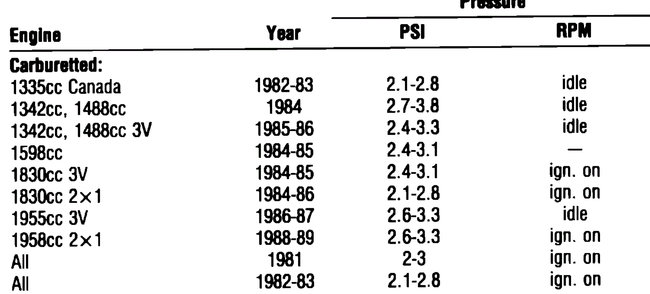Hi,
Although you see no damaged vacuum hoses, there still could be a leak at the base of the carburetor, intake, or something you don't see. Try the test I mentioned above. Also, other than stalling at idle, does it run normally? I realize it's hard to keep running, but didn't know if that was only limited to idle.
I'm starting to question the top dead center sensor in the distributor. . Here are directions for testing it. Let me know if it is something you feel comfortable doing.
1985 Honda Accord L4-1829cc 1.8L SOHC ES, ET 3-bbl
Component Tests and General Diagnostics
Vehicle Powertrain Management Sensors and Switches - Powertrain Management Sensors and Switches - Computers and Control Systems Crankshaft Position Sensor Testing and Inspection Component Tests and General Diagnostics
COMPONENT TESTS AND GENERAL DIAGNOSTICS
If either the CYL or TDC sensor are not satisfactory, they should be replaced together.
CYL Sensor
1. Disconnect sensor electrical connector, then measure resistance between white and orange wire terminals on Accord and Prelude, or white and red wire terminals on Civic and CRX. Resistance should be 650-850 ohms.
2. Measure resistance between the white and orange or white and red wire terminals of the sensor and sensor housing. Meter should indicate infinite resistance.
3. If resistance is not as specified in steps 1 and 2, CYL sensor is defective.
TDC Sensor
1. Disconnect crank angle sensor electrical connector, then measure resistance between white/blue and orange/blue wire terminals on Accord and Prelude, or brown and blue wire terminals on Civic and CRX. Resistance should be 650-850 ohms.
2. Measure insulation resistance between the white/blue and orange/blue or brown and blue wire terminals and sensor housing. Meter should indicate infinite resistance.
3. If resistance is not as specified in steps 1 and 2, TDC sensor is defective.
Let me know.
Joe
Friday, May 29th, 2020 AT 6:31 PM






